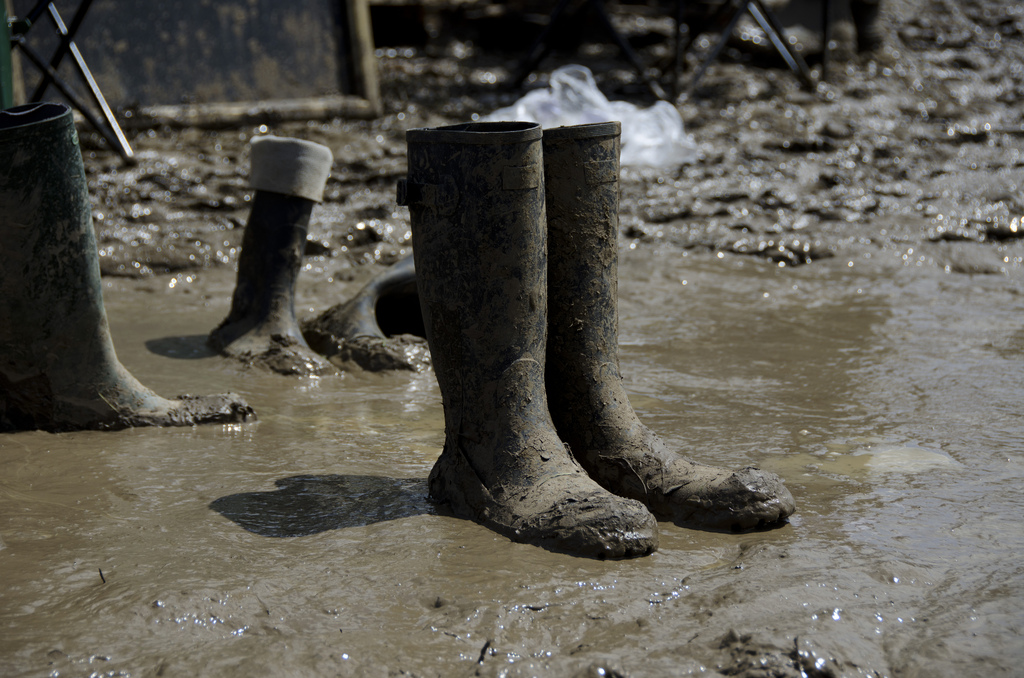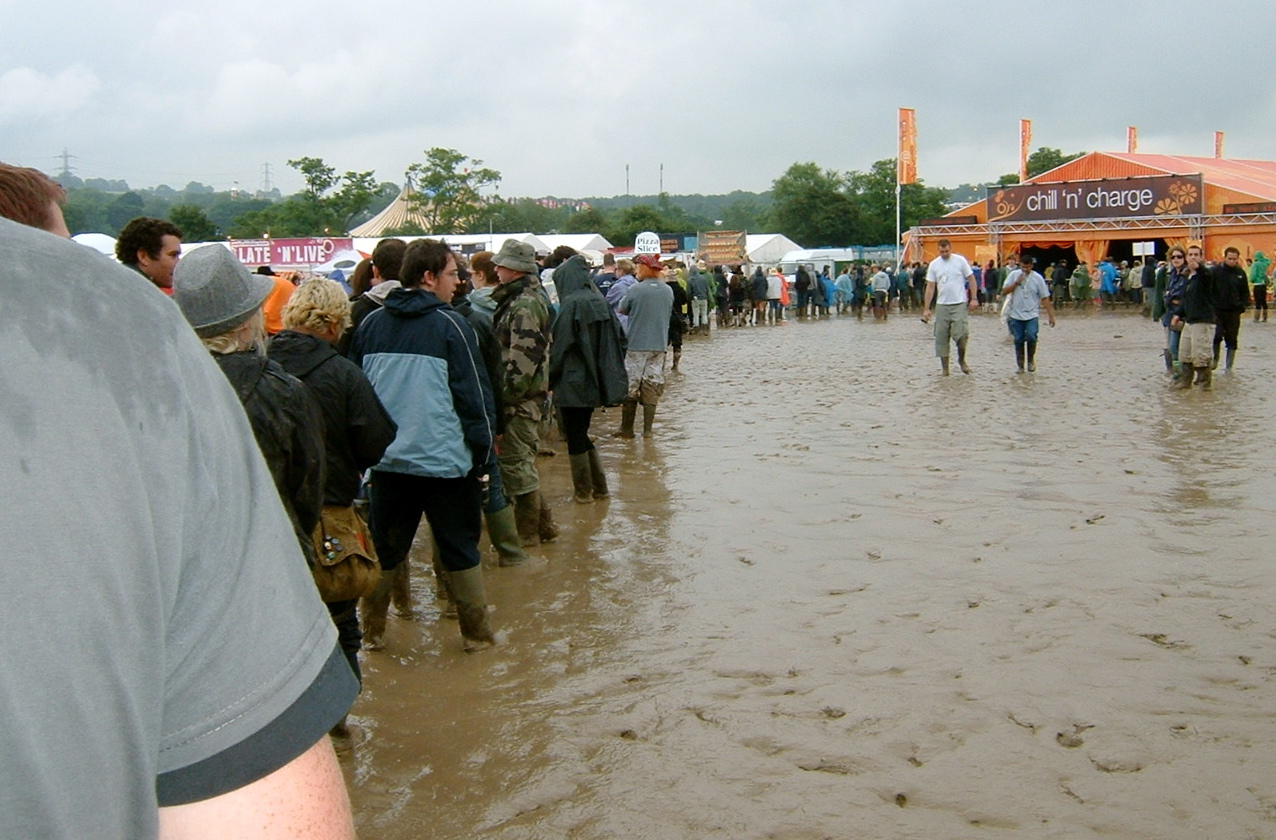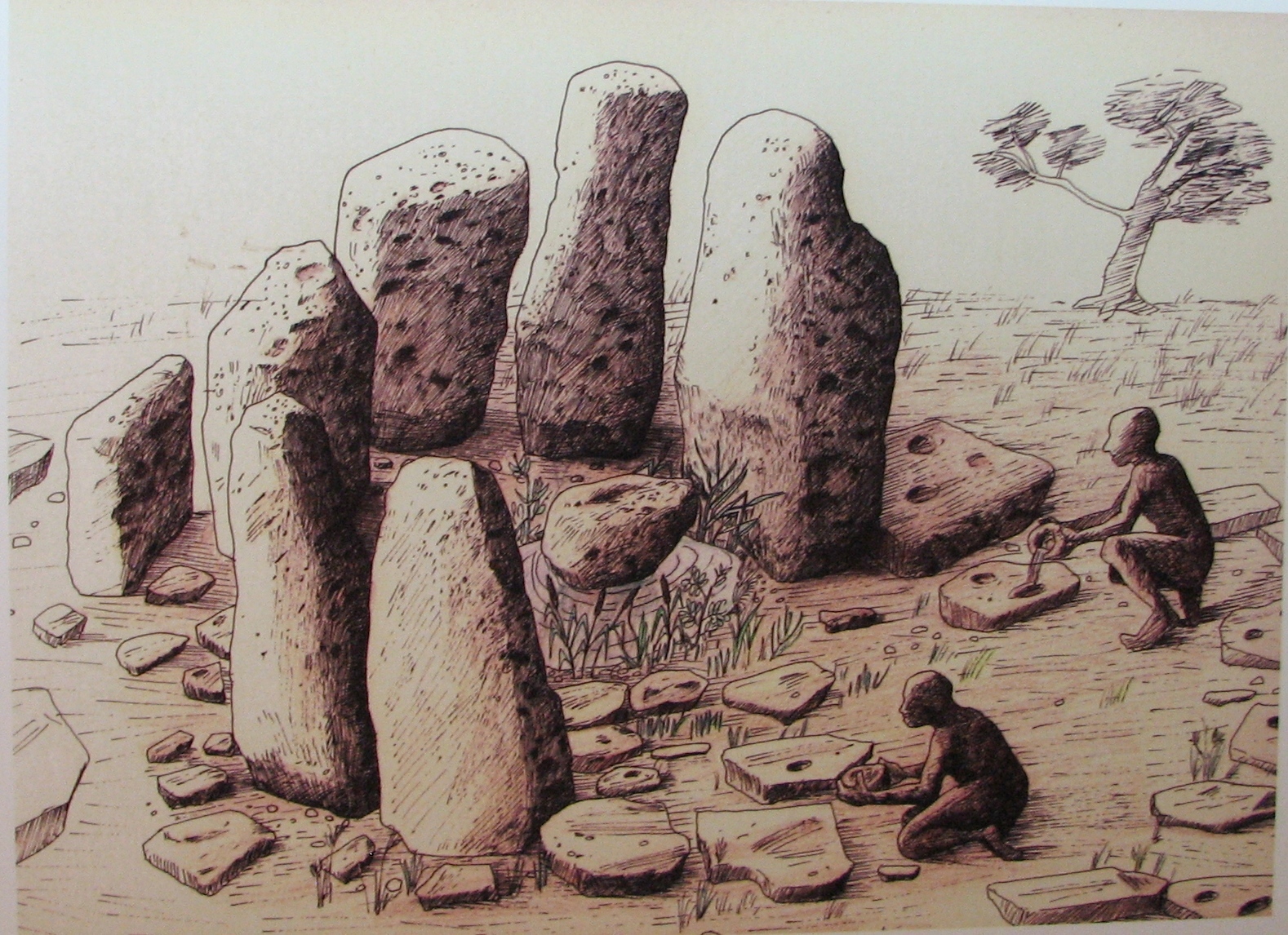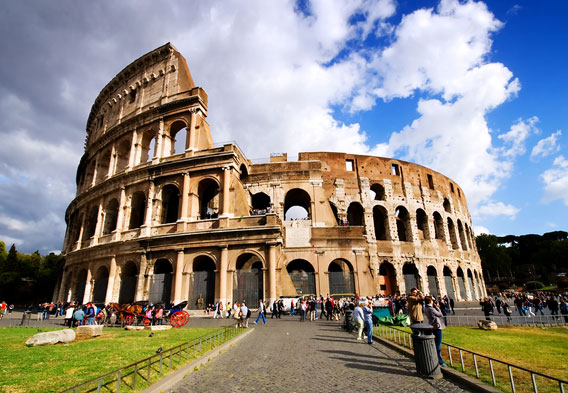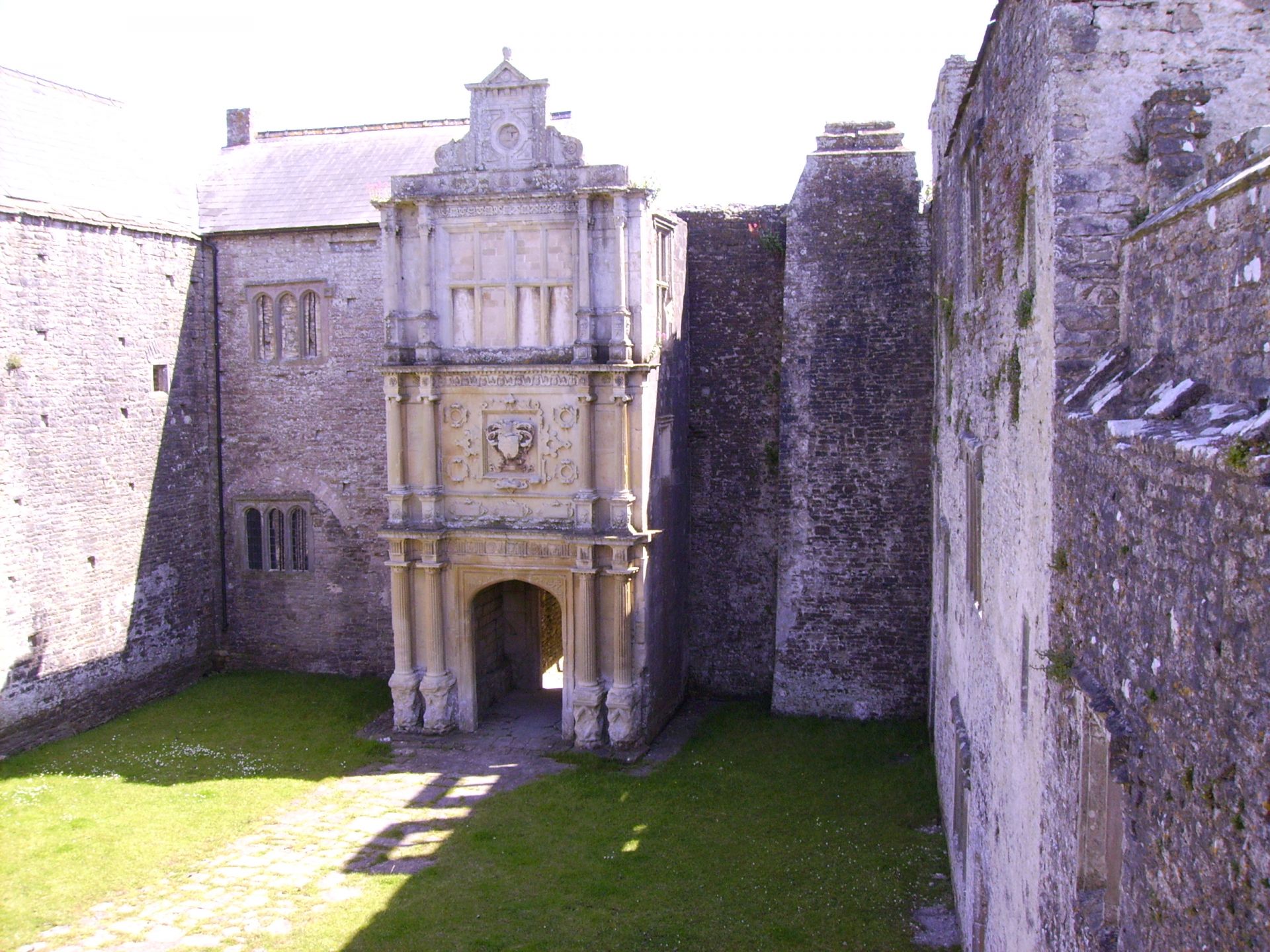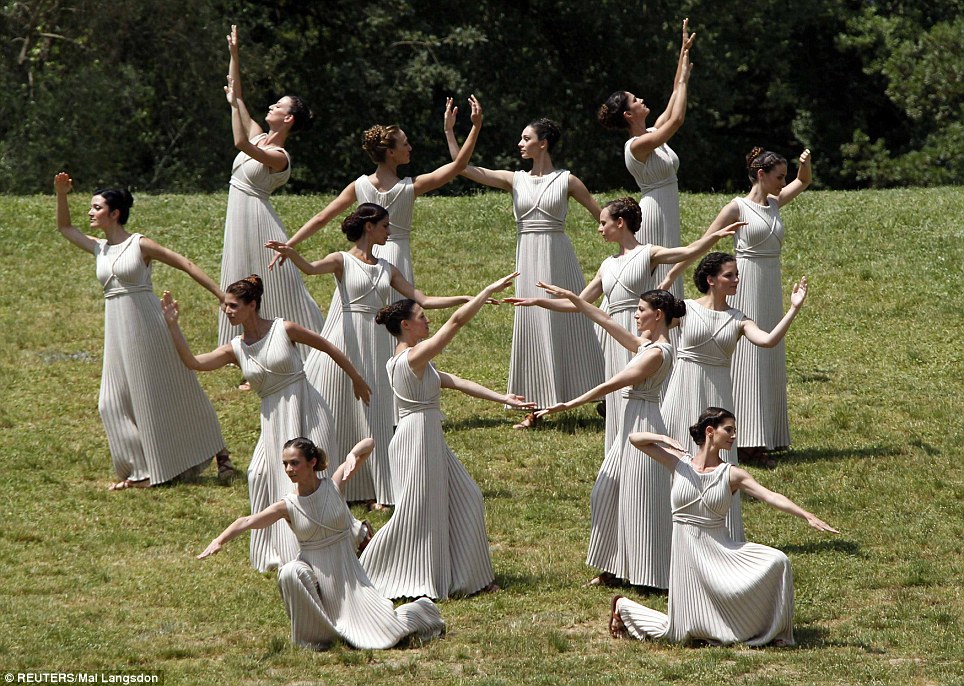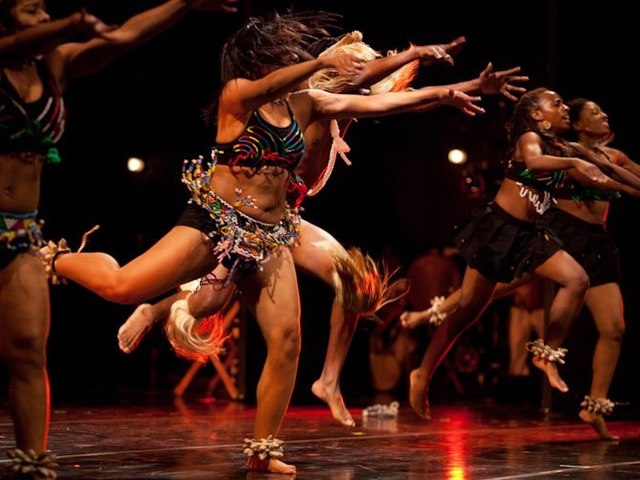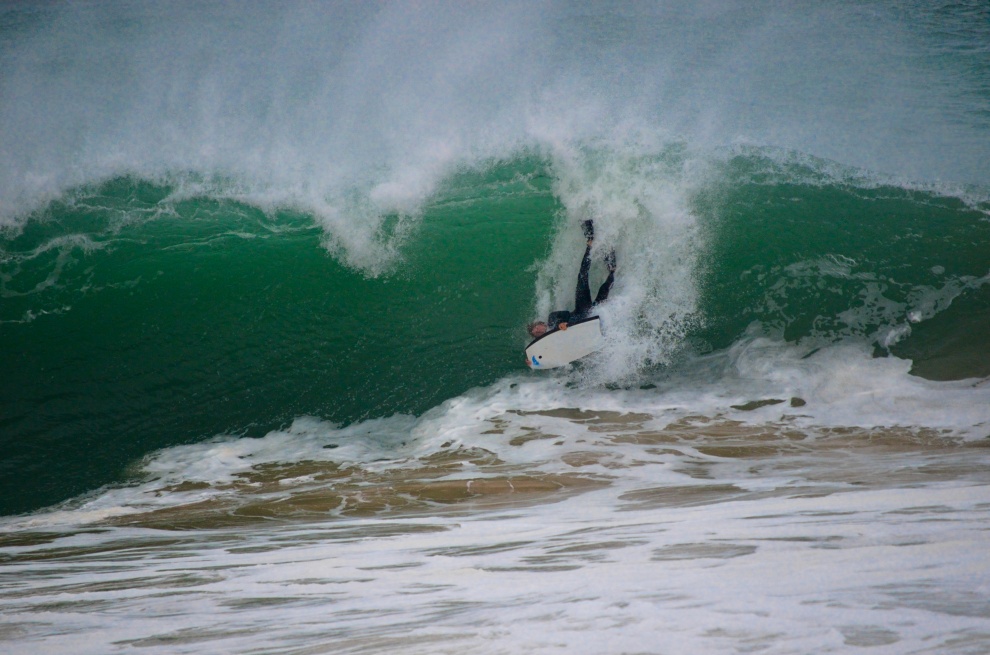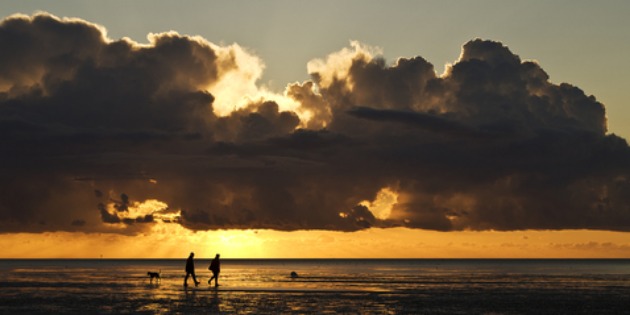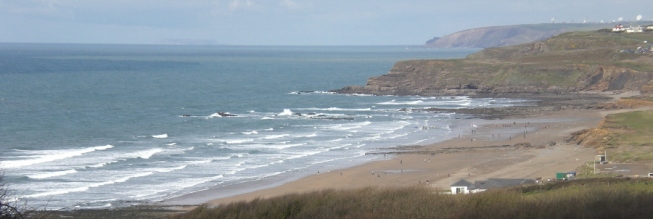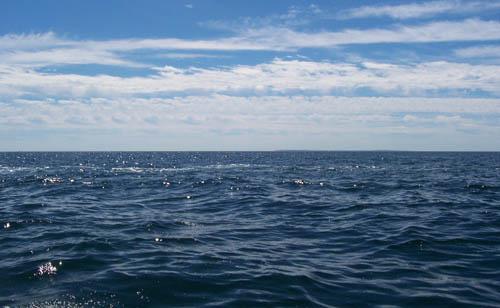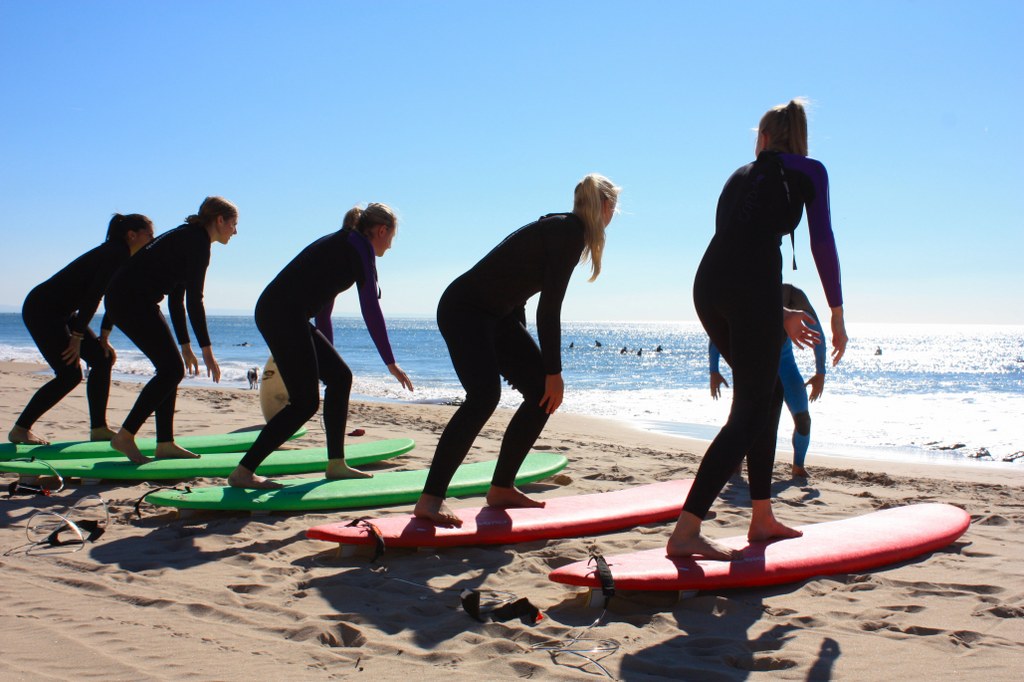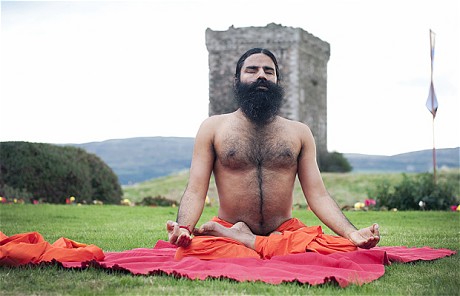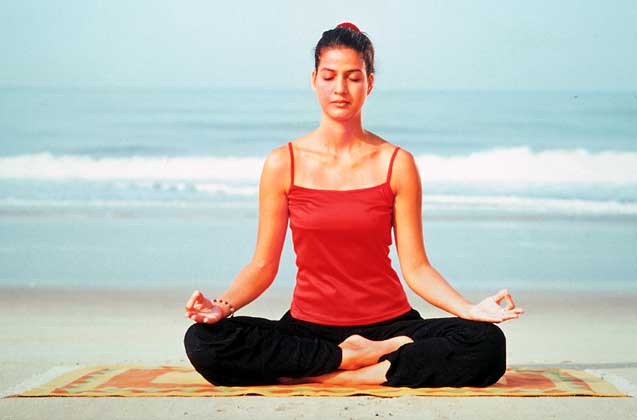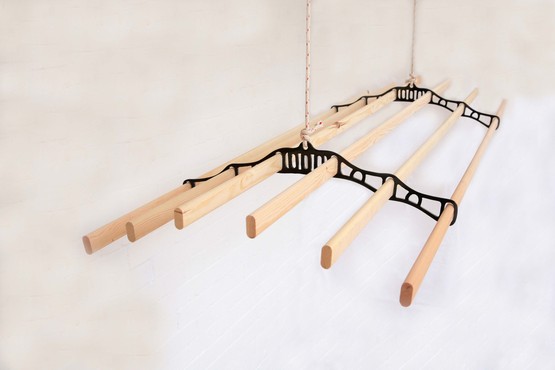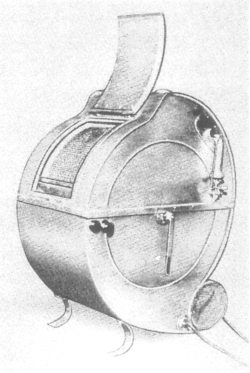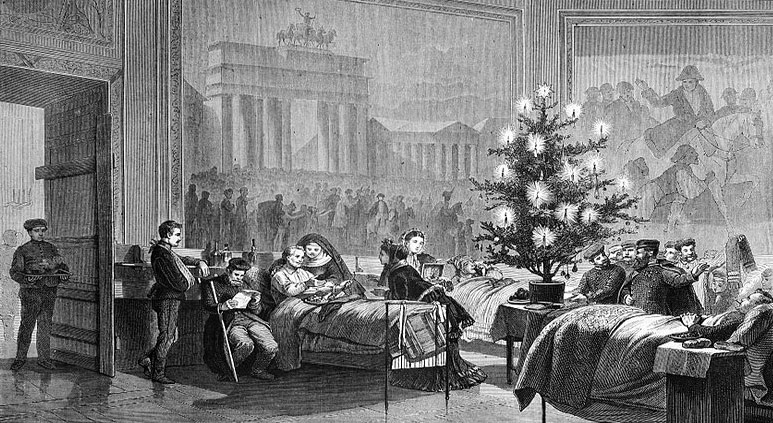How To Care For Your Garden In The Winter
Overwintering your garden and using proper lawn care can ensure that spring brings a wealth of flowers and healthy new growth. This is especially important with rental property, as beneficial plants are easier to care for than weeds. Although your lawn and deciduous trees appear to be dead in the winter, they are actually dormant. That means that all new growth is occurring underground. Here are some tips for lawn care and for taking care of your garden in the winter, so that you have less maintenance in the spring.
Winter Lawn Care
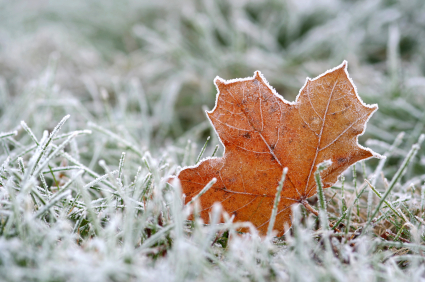
Believe it or not, a healthy lawn is really easier to care for than a sparse lawn. You have to mow it, of course, but the lawn grasses will choke out most weeds. This means that you will have to tend the lawn less often, and will not have renters calling about weed problems. With a few simple preparations, a lawn will do far more than survive a harsh winter. It will thrive the following spring. The freeze-thaw cycle is actually very beneficial to your lawn and garden. As it becomes saturated with snow melt, and re-freezes at night, the soil heaves. This aerates the soil and allows it to absorb nutrients. The loosened soil is a perfect medium for small feeder-roots to thrive, in preparation for a vigorous spring growth.
It is a good idea to winterize your lawn and garden. This is easily done with the proper combinations of phosphates and nitrogen. Water the mixture in to give it a chance to dissolve and absorb into the soil. There, it will condition the soil throughout the winter, helping to protect the roots of lawn grasses and perennial plants from the harshest of winter freezes.
Mulching

With rental property, you probably do not have many flowerbeds in place. If you do, you probably do not spend a lot of time tending them. To keep these beds trim and looking nice, you need to mulch. In general, your mulches should be composted. While raking dropped leaves into your flowerbed may choke out any weeds that would emerge in the spring, the leaves will sap valuable nitrogen out of the soil as they decompose. That is why a compost bin is so valuable. The vegetation goes through its decomposing stage without sapping the soil, and reaches a balance in which it can return value to the soil.
Mulch will also help to protect more sensitive plants from harsh weather. In some cases, your rental property may have a specimen tree, bush, or flower that you value, but cannot be on site to tend. Mulch holds water in so that soil does not dry out. By preventing dry roots in the wintertime, plant health is more likely. Mulch also keeps weed seeds from germinating in the spring.
With rental property, it is often a temptation to relax on lawn care. However, a healthy lawn improves your property, and is easier to care for.
Reasons To Be Glad You Missed Glastonbury Festival Tickets
The Glastonbury Festival is a music icon in the UK, and tickets sell out early. People from all over the world congregate for the festival, many purchasing their tickets months ahead of time – which, by the way – you must do if you intend to attend. For you lucky losers who did not purchase your tickets in time for the Glastonbury Festival 2015, here are some reasons to be glad you missed out.
Weather
Face it – the weather at the Glastonbury Festival is notoriously moody. In fact, weather anywhere in the UK is moody, and when you are planning days of exposure, you are at the mercy of Mother Nature. Think of it this way – your tent and camping equipment is snug and dry in the attic, while your friends’ tents are half submerged in mud in the pouring rain. Those poor saps who were waving their tickets in your face last month are now huddled under umbrellas, and do not have a dry piece of clothing to their names. You, on the other hand, are sitting snug and dry at home. And the music? Well, remember last year when there was an electrical storm? Yeah, they had to cut power to the stage, and there was no music for an hour or so.
Of course, the sun may be shining for the Festival. Wouldn’t that be great? Sorry you have to miss the unrelenting glare of direct sun for hours at a time, with no relief and no shelter. Sure, your tent may offer some shade, but few tents are air conditioned. Is yours? Probably not. Tents are hotter than Hades, and stuffy to boot.
Facilities
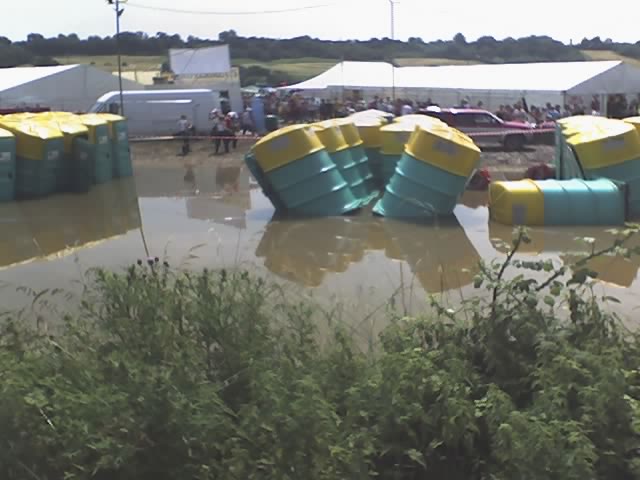
Ah, what the Americans call Porta-Potties. The facilities at Glastonbury Festival are – unavoidable. Take your own tissue, because they are sure to run out of it. And, take your own hand sanitizer. Maybe take your own Wet-Wipes so you can clean your hands properly. Oh, yes, and do your best to avoid the people who, under the influence of – something – mistake the liquid around the loos as a swimming pool.
Queues
Just think, you are at home, watching the performances on TV, dry, and with a private bathroom within easy walking distance. You might have to wait for one of the kids to finish in the bathroom, but it is nothing like the queues at the Festival. You don’t have to wait in line for food, either. Just go to the kitchen, and put together a sandwich. And just think, you sandwich is not soggy from being in an ice chest.
Plus, when you get ready to go to bed, you just go to bed. You do not have to wait in line just to get to your accommodation around Glastonbury.
I was 14 when Woodstock was held in the U.S., and was so disappointed that I was not allowed to attend. Now, a “few” years later, when I see the pictures of Woodstock participants, I – well – I STILL wish I had been there.
The History Of Stonework
Natural stone planters, retaining walls, and pathways are all part of the skills sets of stonemasons in the UK. In fact, stonemasonry is one of the oldest skills in civilization. From the initial quarrying to the final sculpting, every planter and building is a monument to the creativity and mastery of the stonemason who created it. The ability to take a raw, irregular stone and create a symmetrical bit of building block is a valued skill with ancient roots.
New Stone Age
When humans began to build their shelters from stone, rather than from mud and grasses, the new Stone Age was born. The development of mortar and the use of quicklime and stone provided sturdy shelter that could withstand assaults from weather and humans. This was the birth of technology that would yield the Great Pyramids of Egypt, Grecian temples, and breathtaking palaces in Persia.
The first guild of stonemasons was developed during the medieval times, when castles were the architecture of choice. The skills levels were broken down into 3 levels:
- Apprentice
- Journeyman
- Master Mason
These skills levels are used to this very day in many trades and crafts.
Roman Empire
With the expansion of the Roman Empire, stonemasonry took a back seat to timber. Trees were much easier to harvest and prepare for construction for the quickly growing Empire.
However, the spread of the Roman Empire also saw the need for more cathedrals across the face of Europe, and the construction material of choice for these beloved structures was, of course, stone.
Rennaissance
During the 14th Century, stonemasons stretched their wings even further with more artistic endeavors such as the Laurentian Library. Designed and constructed by Michelangelo Buonarroti, this beautiful structure survives to this day, a tribute to the imagination and skill of its creator.
20th Century
The 20th Century, with the industrial revolution, steam engines, cranes, and high capacity mixers for mortar, saw some of the most dramatic changes in the art of stonemasonry.
This most modern configuration of the craft allows for precision and size never imagined by the ancient stonemasons.
The Evolution Of Dance
The evolution of dance is as long as the presence of man on this planet. Perhaps one of the most elusive of arts to visualize, dance is used, among other reasons, to express emotion, as a form of worship, as an act of healing, and for artistic expression. Dance does not leave behind concrete proof of its existence in the form of cave drawings or tools, but it’s presence throughout human history cannot be ignored.
Ceremony
From the earliest recorded history, dance has been used in ceremonies. Actually, there really is a 9000 year old rock painting of people dancing in India, and a tomb painting in Egypt that depicts a couple dancing, has been dated about 3300 BC. The earliest writings about dance are from India, in which a dance called the Natya Shastra is described. This dance, as described in the manuscript, is still around today, and is considered a classic.
Ancient writings in Sri Lanka dating back to 543 BC speak of wedding ceremonial dances, and classical dance of that area typically have very intricate rhythms.
Healing
Dance has also traditionally been used as a form of healing. Civilizations all across the world have used dance to enter trances and states of ecstasy which are supposed to ward off evil spirits that were suspected of causing illness. The Dance Macabre of the middle ages reflects this purpose, and was intended to ward off the black death.
Expression
It is surmised that dance was used before the written and spoken word as a form of instruction. Before the written word, dance was used to teach the myths of ancient civilizations, and the dances were passed down much as stories.
The earliest written record of dancing in Europe was in Homer’s “Iliad”. He explained the chorea, from which the word for designated dance move evolved in the form of “choreography”. The chorea was a system of dance moves, each of which denoted a particular emotion or passion. These passions would be communicated to the audience through the recognized gestures, and they were often recreated in art of the era.
Modern Dancing
Modern dancing dates back to the 1700s but obviously has evolved into more modern and completely different branches. Ballet was developed, built largely on the passions of ancient Greek dance. Dance in India, by that time, had become somewhat vulgar and was banned by the British. However, ballet continued to grow in popularity, and court dance was also very popular. Due to the clothing of the era, most court dances involved large gestures and posing. Ballet is still very popular among children and is taught around the world today, just need to make sure you have the right dance accessories!
The last century has seen a great deal of change in dancing, perhaps more than in any other era. The beginnings of the 1900s saw independent dancers begin to break loose from their partners in modern dance forms, and now, it is not unusual to see people dancing without a partner at all.
Folk dancing, court dances, ballroom dancing, and other forms of dance are rising in popularity. As people strive to become more fit, they have found satisfaction and expression, as well as social interaction, in various forms of dance.
The History Of Bude
Bude is a picturesque town on the ocean, located in the northern part of Cornwall, England. The beaches of Bude face a part of the Atlantic Ocean called the Celtic Sea. This popular Victorian era watering hole and resort has remained a draw for those wanting to enjoy beautiful beach and surf. The surf, especially, draws in surfers from all over the world, with the power of the Atlantic behind the surf that beacons.
Surfing
Bude is actually the home of the surfing industry in the UK. It really began in the 1950s, when young Australians, recently relocated due to WWII, discovered the surf in this picturesque area. They formed the Surf Life Saving Club in 1953, and to this day the town takes pride in its support of the surfing society. There are varieties of challenges in the surf of this area, making it an ever-changing landscape with plenty of choices of challenges.
Romantic Settings
The beaches were so popular during the Victorian era that the railroad led there, just for the middle classes could enjoy “sea bathing”. In addition to the attraction of the sea, the wild surroundings helped to fuel details that accompanied Arthurian Legend.
Beaches
The beaches at Bude are legendary, from the wide beach at Widemouth Bay to the striking cliffs at Sandymouth Beach. The sand was once used by area farmers to amend the thick soil of farms.
Not only are there several terrific beaches that draw visitors, there are numerous coves that bear exploration. The beaches at Widemouth Bay, Crooklets, and at Summerleaze draw the majority of surfers. However, the more experienced surfers often enjoy the rockier climes of Sandymouth, NorthCott Mouth, and Duckpool.
Weather
The Atlantic Ocean, with its notorious fury and damaging storms, succeeds only in creating fabulous surf at Bude. The size and anger of the Atlantic produces some of the best, long swells that break into great waves on the beach.
While winters are predictably cold, wetsuits keep the most dedicated out on the surf. The sunshine during the rest of the year brings out the beach combers and picnickers, too.
Skill Levels
Since Bude is basically the home of UK surfing, it has established a great range of skills groups for surfers. Beginners can learn techniques at Crooklets. Surf schools like Bude Surfing Experience provide soft-shell boards that help beginners get started and build strength and confidence. They are lightweight, buoyant boards that make it easy to ride waves.
Visit Bude
There is plenty to do in Bude besides surfing, too. Visit Bude Castle, which is a heritage centre. Take a tour of the Bude Canal, or visit the lovely boutiques in town, dine in some of the nicest restaurants, and kick back in comfy inns and pubs. You can stay in comfortable lodging near the beach as you go coasteering and surfing, or select a comfortable bed and breakfast with full view of the meadows in the area.
Bude even has its own rugby and football clubs, and is the birthplace of George and Arthur Mills, both authors.
The History Of Yoga
Yoga may surprise you. Many people think of yoga as being a series of “funny positions” during which you are supposed to meditate. However, there is much more involved with yoga. It is actually an umbrella word that encompasses physical discipline, religion, and several forms of philosophy.
What is Yoga?
The word “yoga” actually refers to the idea of “yoking” together the mind and the body of the practitioner. The first record of the practice of yoga dates back to the year 1500 BC in India.
In Hatha yoga, the physiology of the human body is defined in 3 categories: the physical, the subtle, and the causal. The “Self” of the person, otherwise known as the atman, is in five layers, visualized much like the layers of an onion. These five layers each have energy flowing through them. These five layers, or “sheaths” are:
- Food (the physical body, made of flesh and bone, fat, skin, and filth)
- Energy (in the form of breath – the life that animates the body)
- Mind (also includes the senses; makes the person who he is and can be changed)
- Wisdom (the intellect, influenced by senses. Can change, has no self-knowledge, and is not always present)
- Bliss (the innermost sheath, only expresses itself during deep sleep)
Besides these physical traits of the human being, there is the subtle traits, which are made up of energies that course throughout each of the layers. These energies flow throughout the layers, or sheaths, and encounter meeting points called chakras. These meeting points can become clogged or polluted, causing illness, mental distress, or any of the other problems that the human being encounters.
The Practices of Yoga
There are many different practices of yoga, as it has both Hindu and Buddhist roots. The word, itself, has multiple meanings. However, it is, in general, meant to describe the yoking together of the human body, mind, and spirit to attain balance and full awareness. The goals of this yoking may be to attain better physical health, emotional healing, or spiritual purity. The different types of yoga typically have different goals, such as those mentioned here, and others.
Westernized Yoga
Yoga came to the western civilizations in the mid to late 1800s. This was during the height of the Victorian era, in which England had a presence on every continent on the planet, and the strange and unusual animals, plants, and sciences of the world were all showcased in the UK. Swami Vivekananda taught the philosophy of yoga to the era’s leading transcendentalists, such as Ralph Waldo Emerson.
Throughout the remainder of the 19th century and through the first half of the 20th century, westernized yoga focused on the transcendental feature of meditation and “getting in touch” with the “inner self”. However, the later part of the 1900s saw a growth in the physical discipline aspect of the movement.
Since the late 20th century, yoga has been seen in the West as an excellent physical exercise and stress maintenance discipline for people of all ages and physical abilities. Fitness boot camps that feature yoga have been becoming more common over the past 10 years and are springing up all over the British countryside.
The History Of The Clothes Dryer
I grew up with a clothes line. I took it for granted that all sheets, towels, and clothing were stiff once they were dry, and smelled of fresh air. I also expected that most laundry had fly-specks. Our clothesline was so low that the bed sheets would almost brush the tops of the grass. Now I realize that Mom had Dad build the clothesline that way so my sisters and I could reach the lines at a younger age, and help out with that chore.
One day, after Mom had hung a huge load of laundry on the twin lines, she returned to the house and looked out the window just in time to see our bird dog, Queenie, pull the very last item off of the line with gleeful abandon. This was one of the downsides to your standard washing line. After the outdoors clothesline we went with an indoor clothesmaid.
A few years later, Mom was in a foul mood because it was her anniversary and she hadn’t gotten a gift from Dad. When, lo-and-behold, there was a knock at the door and the postman (there was no other delivery company in those days) delivered a brand new electric clothes dryer! Mom burst into tears. Of happiness, by the way.
That is our family history of the clothes dryer. As an adult, I’ve never had to use a clothesline, thank goodness. But, the first electric clothes dryer first appeared in 1915 – long before we got our labor saving device.
In fact, the early 1800s saw the invention of a ventilated tub that would be rotated over a fire, spit-style, to dry clothes. For generations, the “automatic” clothes dryer was used only in commercial situations, for textile manufacturers and hostelry.
However, two things conspired to put electric and gas clothes dryers in private homes. These were the end of World War II, and the rising significance of women in society. The end of the war brought about not only a needed outlet for technology, but it also brought about a post-war boom. More people – at least, in the winning countries – were making more money than they ever had. The middle class expanded as more people moved up in economic ranking. The expanded middle class meant that more people were in a position to afford heretofore unaffordable luxuries.
In addition, women had kept the country going while the men were at war, and they were not to be denied when the war was over. While women’s work is never done, it can sure be aided by technology.
As far as I’m concerned, though, I’m just glad I don’t have to sleep on fly-speckled sheets, anymore.
The History Of Plants As Decoration

From the beginnings of recorded history, plants have been used for decoration. Excavated ruins of Pompeii have elaborate mosaics portraying colorful flowers and huge olive and shade trees. Exhumed mummies from pharaoh’s tombs have plants, herbs, and seeds incorporated into the shrouding that wrap the bodies, and the tombs themselves often have bulbs and seedlings of the royal’s favorite plants included, so they can journey to the afterlife together. Thus begins the convoluted history of plants as decoration.
Plants as Decoration: Bring the Outside In
Some of the purposes of decorating with plants stemmed from the desire to bring natural beauty indoors. The legend of the Christmas tree is a perfect example of this. After seeing the night stars twinkling in the branches of a pine tree in the forest, a man cut a tree down and brought it indoors for his ailing wife. He tied candles to the branches to simulate the twinkling of stars, and the Christmas tree was born.
Even the ancient Greeks believed in the benefits of indoor plants. They believed, correctly, that plants purified the air. Therefore, when anyone was sick, they would bring plants in to absorb the illnesses present. Today, a scattering of plants in the home helps to reduce the risks from formaldehyde, radon gas, and many other chemicals used in construction materials. In fact, businesses often keep living plants in their offices and waiting rooms for that very reason – just a few judiciously placed plants can completely cycle all the air in a building every 24 hour period. Keep in mind, too, that plants absorb carbon dioxide and release oxygen into the air.
Outdoor Beauty Comes Indoors
The custom of cut flowers was first recorded in ancient Rome, when Anthony gifted Cleopatra with cuttings from fragrant gardenia bushes. This desire for fragrance, color, and texture has been recorded throughout history, and plants serve the role quite well. Cut flowers continue to be one of the most frequently given gifts across the world, and are appropriate for any occasion from birth to death, from wedding to anniversary to birthday.
Potted Plants
Even the Roman Coliseum had potted plants in the atria. Palm trees lined the Roman baths, and every villa of note had its own atrium with both potted plants and gardens. This ultimate version of indoor gardening was a symbol of wealth and health, and in the minds of the citizens, elevated nature to its deserved ranking in human priorities. To this day, plant pots take a significant place in our homes.
Interior decorators today often say that there should be an element of nature in each focal point in a room. Potted plants play perfectly into that scheme, providing height in corners or as frames for elegant furnishing, or as texture in a carefully planned still-life. The colors available in foliage, as well as size and textures, make them some of the least expensive accessories for your home.
If you decorate your home and office with plants, you are right in step.
The History Of Fitness
You’ve probably heard the old saying, “only the strong will survive”. Survival of the fittest is steeped in Darwinian tradition, leading humans to think that the gene pool favors those able to either fight or flee. Historically, this may have been true – one would have to be in pretty good shape to survive in the wild, surrounded by saber-toothed tigers. You would also have to be in pretty good shape to be a hunter-gatherer. Perhaps that is why, in the early days of recorded civilization, most humans had a life expectancy of around 30 years.
Mileage
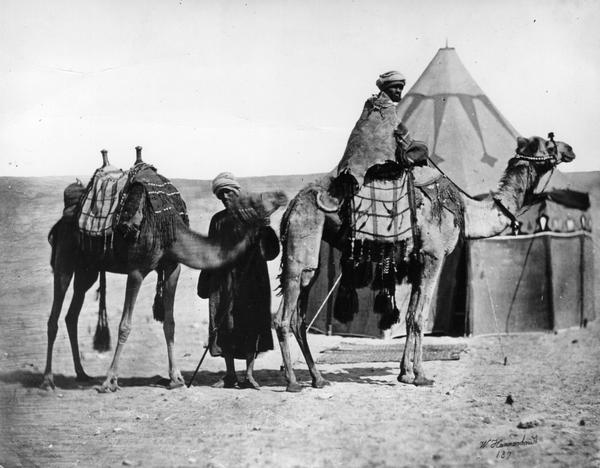
Nomadic peoples will travel as much as 20 miles in one day to not only provide for their clans, but to visit other tribes. Celebrations such as games and dances last for hours. Historically, primitive peoples lived this way, and some tribes do to this day in less modernized parts of the world.
Around 5000 B.C., the Persian Empire claimed ownership of all male children as soon as they turned 6, and, as a matter of training, required extensive physical commitment in the form of riding, marching, and even javelin throwing. As the affluence of the Persian Empire advanced, the level of physical activity declined, as did, ultimately, the empire.
Philosophy
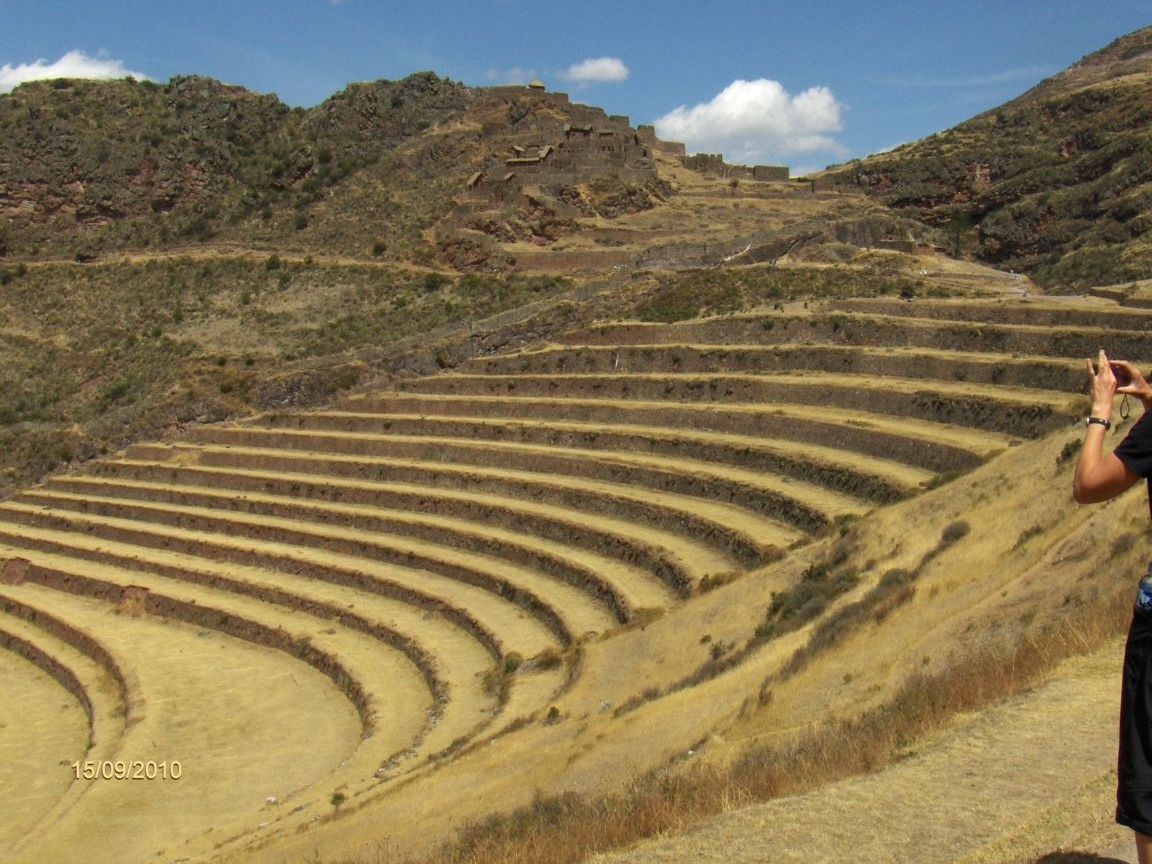
As civilization has advanced, so has motivation. Humans learned to farm and ranch, raising their food so that they would not have to pursue it. Granted, there were the workers who still toiled daily tending crops and flocks, but the emergence of land ownership lead to actual “down time” for human beings. In different parts of the world, this lead to more free time, which meant more thinking. Clever philosophers observed that some diseases became prevalent with the decrease in activity. Diseases with internal organs, probably diabetes and heart disease, became more prevalent. This, probably around 2000 B.C. gave birth to the first recorded exercise regimen. In China, Confucius recommended physical exercise and in India, the beliefs springing from Hinduism and Buddhism pushed people toward a level of physical exertion for the sake of exertion.
Yoga and Kung Fu were developed during these times, and were the first forms of exercise recorded that did not involve putting food on the table. It is estimated that 24 million people today participate in these two forms of exercise, alone.
Time Passages

Through the centuries, civilizations have risen and fallen. It is interesting to note that the more “civilized” a nation becomes, the less fit the citizens are. And equally interesting is the fact that the conquerors are typically less civilized, and more physically fit.
Modern Fitness

People today work to keep themselves in shape, requiring motivation that is not based on survival. The most common way to do this is through accountability. With a workout partner or personal trainer, people are more likely to stay with a regimen.
With the impact of computer and communication technology in today’s world, online trainers and training websites like https://youronlinept.co.uk/ have begun to fill the gap, providing accountability and coaching from the ether, much like the philosophies of ancient China and India. Online personal training and diet plans are the next step towards keeping fit, whether your short on time, or willpower, online personal training is a great way to organise and stay in shape.
The History Of Surfing

Surfing is one of those things that you just know would have been around for thousands of years. I could imagine even the cavemen of yesteryear interested in whether they could ride with the current of the waves. It is assumed that the origin of surfing began with bodysurfing. This is the practice of riding a wave without any bouyant board or other assistance. It allows you to ride with the wave down to the shoreline. Surfboards and Bodyboards are actually a fairly recent development in the lifespan of surfing. Surfing is said to have begun in pre-contact Hawaii, it is also said that Peru had its fair share of wave riders.
Surfing In Writing

Surfing was first written about by a chap called Joseph Banks, who had travelled to hawaii on the HMS Endeavour with Captain James Cook. It is said that surfing had been part of Polynesian Culture, long before the Europeans were ever in contact with them. The leader, Chief Ali’i was know the be the best wave rider in town, he also had the best surfboard made from the best timber. It seemed that the working class and the ruling class were seperated not only by their wealth, but by their surfing skills. The working class were not allowed to ride on the same beaches as their richer counterparts, although they would gain notoriety from their surfing ability.
Classic European Interference
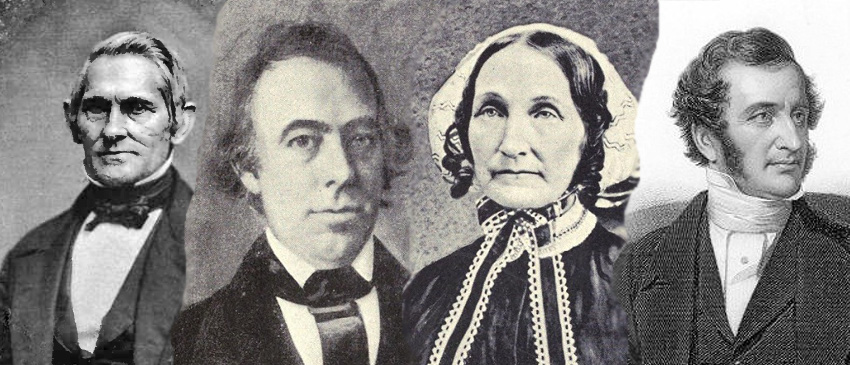
Of course, Hawaii could not be left alone to carry on their sinful ways. Missionaries had to be sent from Scotland and Germany in 1821. These lovely missionaries discouraged surfing aswell as many other Polynesian traditions. By the time we hit the 20th century, surfing as well as most of the other Polynesian traditions had all but vanished.
Revival Of The Sport
Hawaiians began to revive surfing well into the 20th century, and managed to re-establish the sport. The revival is said to be linked to boosting tourism and travel. Jack London wrote about the sport after his visit to the islands, and Duke Kahanamoku “Ambassador of Aloha” helped expose surfing to the rest of the world. The 1960s is when surfing really hit the bigtime, with the release of the film “Gidget” Surfing really went mainstream, moving surfing from an underground culture into a national fad. Surfing has been popular eversince, and there are even more crazy ways to ride the waves. If you’re interested in taking up surfing, why not take a look at the adventure activity centres in Croyde, they’ll offer you the opportunity to do what you need.

